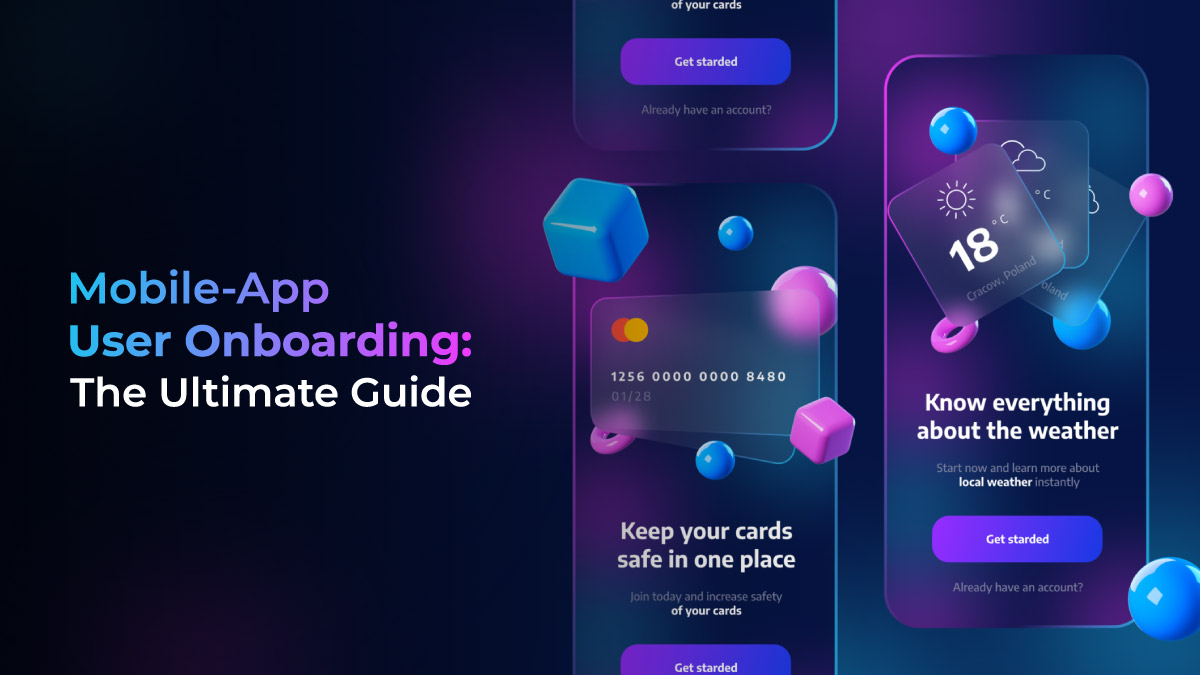Discover essential user onboarding best practices to create a seamless and engaging user experience in your mobile app, boosting retention and user satisfaction.
In the competitive world of mobile apps, first impressions are crucial. User onboarding is the process of guiding new users through your app, ensuring they understand its value and how to use it effectively. A seamless onboarding experience can significantly enhance user retention and satisfaction. In this comprehensive guide, we will explore user onboarding best practices to help you create a compelling and intuitive onboarding process for your mobile app.

1. Understanding User Onboarding
a. What is User Onboarding?
Definition and Objectives
User onboarding is the series of steps and interactions designed to introduce new users to an app, helping them understand its features and benefits. The primary objectives are to educate users, demonstrate value, and encourage engagement.
b. Importance of Effective Onboarding
Enhancing User Retention
Effective onboarding can drastically reduce churn rates by ensuring users quickly realize the app’s value and become engaged.
Improving User Satisfaction
A well-designed onboarding process can improve User Onboarding by making the initial interaction with the app smooth and enjoyable.
2. Key Elements of a Successful Onboarding Process
a. Welcome Screens
Creating a Positive First Impression
Welcome screens set the tone for the User Onboarding. Use them to greet users, provide an overview of the app’s value, and create a positive first impression.
b. Interactive Tutorials
Guiding Users Through Core Features
Interactive tutorials can help users understand the app’s core features by guiding them through key actions and functionalities.
c. Progressive Disclosure
Introducing Features Gradually
Progressive disclosure involves revealing features gradually as users need them, preventing information overload and making the learning process manageable.
d. Personalized Experience
Tailoring Onboarding to User Preferences
Personalization can make onboarding more relevant and engaging by tailoring the experience to the user’s preferences, behaviors, and needs.
e. Social Proof and Trust Elements
Building Credibility
Incorporate social proof, such as testimonials, user reviews, or awards, to build trust and credibility during the onboarding process.
3. Designing an Effective Onboarding Flow
a. Understanding User Needs
Conducting User Research
User research is essential to understand the needs, expectations, and pain points of your target audience. Use surveys, interviews, and analytics to gather insights.
b. Mapping the User Journey
Identifying Key Touchpoints
Map out the user journey to identify key touchpoints where onboarding interventions can have the most impact. Focus on critical moments that drive engagement and retention.
c. Simplifying Sign-Up and Registration
Reducing Friction
Simplify the sign-up and registration process by reducing the number of steps required, offering social login options, and minimizing the information requested.
d. Using Engaging Visuals and Copy
Capturing Attention
Use engaging visuals, concise copy, and clear calls-to-action to capture users’ attention and guide them through the onboarding process.
e. Providing In-App Support
Offering Help When Needed
Provide in-app support options, such as chatbots, FAQs, or tutorials, to assist users if they encounter difficulties during onboarding.
4. Measuring and Optimizing Onboarding Success
a. Key Metrics to Track
User Activation Rate
The user activation rate measures the percentage of users who complete the onboarding process and reach a key milestone, indicating they have understood the app’s value.
Retention Rate
Retention rate tracks the percentage of users who continue to use the app over a specific period, reflecting the effectiveness of the onboarding process in retaining users.
User Engagement
User engagement metrics, such as session length and frequency, indicate how actively users are interacting with the app after onboarding.
b. A/B Testing
Experimenting with Different Approaches
A/B testing allows you to experiment with different onboarding approaches, comparing their effectiveness in achieving desired outcomes and optimizing the process accordingly.
c. User Feedback
Gathering Insights for Improvement
Collect user feedback through surveys, reviews, and direct interactions to identify pain points and areas for improvement in the onboarding process.
5. Case Studies and Examples
a. Successful Onboarding Examples
Duolingo
Duolingo’s onboarding process effectively uses gamification, interactive tutorials, and personalized learning paths to engage and retain users.
Slack
Slack’s onboarding emphasizes collaborative features, providing step-by-step guides and interactive tutorials to help teams get started quickly.
b. Lessons Learned
Common Pitfalls to Avoid
Learn from common onboarding pitfalls, such as information overload, complex registration processes, and lack of personalization, to create a more effective onboarding experience.
6. Future Trends in User Onboarding
a. AI and Machine Learning
Personalized Onboarding Experiences
AI and machine learning can enhance personalization by adapting the onboarding process to individual user behaviors and preferences.
b. Augmented Reality (AR)
Interactive and Immersive Tutorials
AR can provide interactive and immersive tutorials, offering a hands-on experience that enhances user understanding and engagement.
c. Voice Assistants
Simplifying Onboarding with Voice Commands
Voice assistants can simplify the onboarding process by allowing users to navigate and interact with the app using voice commands.
Creating a seamless user onboarding experience is essential for the success of any mobile app. By understanding user needs, designing an effective onboarding flow, and continuously measuring and optimizing the process, you can ensure users quickly realize the value of your app and remain engaged. Embrace emerging trends and technologies to stay ahead in the competitive mobile app market, and build an onboarding experience that delights and retains users.
By implementing these best practices, you can create an onboarding experience that not only engages users but also sets the foundation for long-term success. Remember, the key to effective onboarding is to make the process intuitive, personalized, and valuable, ensuring users feel confident and excited to continue using your app with techtenstein.



